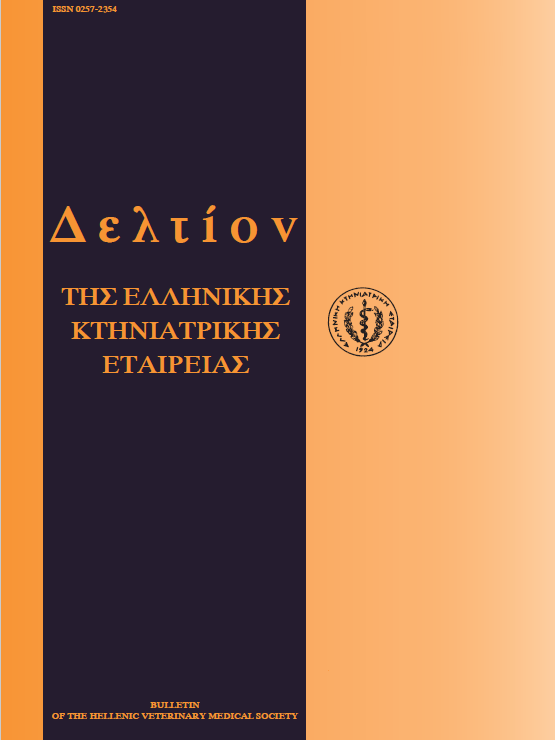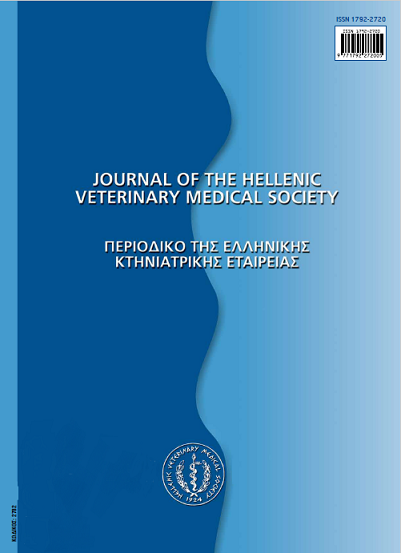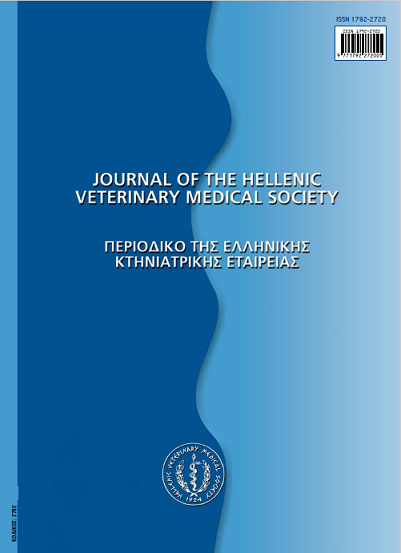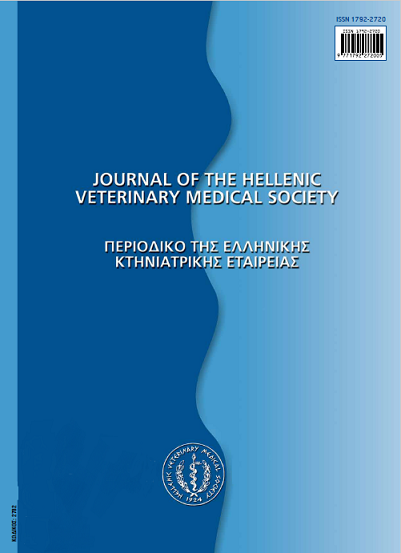Erythema multiforme in the dog
Abstract
Canine erythema multiforme is a rarely seen skin eruption that is characterized by variable clinical signs and a rather distinctive histopathology. From a clinical point of view erythema multiforme is of particular interest, mainly due to its life-threatening potential. It is considered a host-specific cell-mediated hypersensitivity reaction, leading to epidermal and follicular wall keratinocyte apoptosis. Although the exact pathomechanism is not currently fully understood, it is often associated with drugs, infections, neoplastic and connective tissue diseases, adverse food reactions and idiopathy. Definite diagnosis is based on the clinical and histopathological findings and therapy aims to the elimination of the triggering factors and the institution of supportive measures. The usefulness of glucocorticoids in canine erythema multiforme is still controversial.
Article Details
- How to Cite
-
PAITAKI (Χ. ΠΑΪΤΑΚΗ) C., KOUTINAS (Α.Φ. ΚΟΥΤΙΝΑΣ) A. F., & SARIDOMICHELAKIS (Μ.Ν. ΣΑΡΙΔΟΜΙΧΕΛΑΚΗΣ) M. N. (2018). Erythema multiforme in the dog. Journal of the Hellenic Veterinary Medical Society, 52(3), 220–224. https://doi.org/10.12681/jhvms.15450
- Issue
- Vol. 52 No. 3 (2001)
- Section
- Review Articles

This work is licensed under a Creative Commons Attribution-NonCommercial 4.0 International License.
Authors who publish with this journal agree to the following terms:
· Authors retain copyright and grant the journal right of first publication with the work simultaneously licensed under a Creative Commons Attribution Non-Commercial License that allows others to share the work with an acknowledgement of the work's authorship and initial publication in this journal.
· Authors are able to enter into separate, additional contractual arrangements for the non-exclusive distribution of the journal's published version of the work (e.g. post it to an institutional repository or publish it in a book), with an acknowledgement of its initial publication in this journal.
· Authors are permitted and encouraged to post their work online (preferably in institutional repositories or on their website) prior to and during the submission process, as it can lead to productive exchanges, as well as earlier and greater citation of published work.











